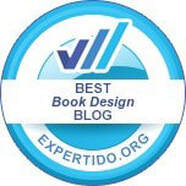|
A book cover design for any author is a combination of extensive research and creative flair from the designer, however it is the research into the design and its drafts which can get overlooked when someone decides to make their own. It’s easy these days to go to the many stock imagery websites and buy a photograph and simply add your title, subtitle and author name, however this still doesn’t mean you’ll necessarily have an effective design. The stock imagery websites are great and will give any designer a wide choice of photography and vector images to choose from, but they are still aimed at a very wide buying audience of designers, advertisers, web designers and so many other creatives. This inevitably means that the images upon these sites need to appeal to a wider range of uses other than just book cover design. So, if you are choosing just an image, you’ll need to be selective and of course do research into the ‘actual’ needs of your book, what I mean by this is that an open-minded approach to your cover should be adopted. Now most authors will be thinking “I’m open-minded with my book’s cover”, but when writing your book, you will have formed an idea as to what you want to see upon the front page (it’s hard not to), and this is where becoming objective is crucial. When you understand that the primary job of your book’s cover is advertising it can make the design easier to create (giving you a sharper focus), this leads on to establishing what should and shouldn’t be upon the front page, taking thirty seconds to describe your book (and no more) will give you an idea as to the important aspects which should make it on to the cover. Now with a blank sheet of paper you should write down as many keywords from your thirty second description as you can, these words will become the basis of your development of the book cover design itself. From writing down seven or eight keywords you should go on to develop each one of them, this should start to formulate ideas as to how the focal points of your book should come across upon the front page. For example, if one of the words is ‘romance’ then you could bring out words such as: couple, heart, love, together, happiness, light, flowers, sunset, rings, kiss, holding and so on. The more descriptive you are the better, from here you should develop images which can clearly represent your book. When you know what you need upon the front page it still pays to keep it relatively simple, over-complicating your book with too many elements can confuse the reader and turn them away from looking any further into your work. A clean and professional image will do more for your book than something which is too busy. So once you know what you want upon the design it will be a case of researching your own selection of images (if you have high quality photographs) or the stock imagery sites for elements which will represent your idea. Having knowledge of Photoshop will really help your work to stand out as you will find that any stock image will usually have a non-exclusive license (meaning that anyone can and will use it elsewhere too). Being able to either edit or combine several images and effects will help to ensure that your book cover design is unique, if you’re not able to do it yourself then it’s worthwhile getting a designer to do it for you. From getting a design that you’re happy with you should next carefully consider your font, so many DIY book designs are let down by the wrong fonts (and choice of font color). Remember that your book will be shrunk to the size of a postage stamp when on line, so a font choice which is too small or a similar color to its background will not help your title stand out to the reader. Try to use no more than three different fonts in your design, keeping the font for the blurb in a basic sans serif or serif ensures that your text is actually readable, for the front you should choose a font which matches the style of your genre and is clearly readable, the subtitle should be in a font that differs from the title and your author’s name should normally match the font used for the main title. When you try to use many different fonts on the front page your design will look confusing and speak volumes to the reader about the pages within. With the color of your font you must ensure that your text for the blurb is clear to read, again, you only have a limited amount of time to entice your prospective reader to buy the book, don’t waste it by making your cover too hard to read. The front page is the same, you may want to vary the color of the title, subtitle and author name to signify the difference, the rule is to use no more than three separate colors (again, any more will lead to confusion). The more thought and research you put into the design of a book cover will lead to a better looking and more effective design.
0 Comments
Your comment will be posted after it is approved.
Leave a Reply. |
JD&JCategories
All
Archives
July 2024
All information within this website (including its blog) is published in good faith and for general information purposes only. JD&J Design LLC does not make any warranties about the reliability and accuracy of this information. Any action you take upon the information in this website is strictly at your own risk. JD&J Design LLC is not liable for any losses and/or damages in connection with the use of this site and information.
|



